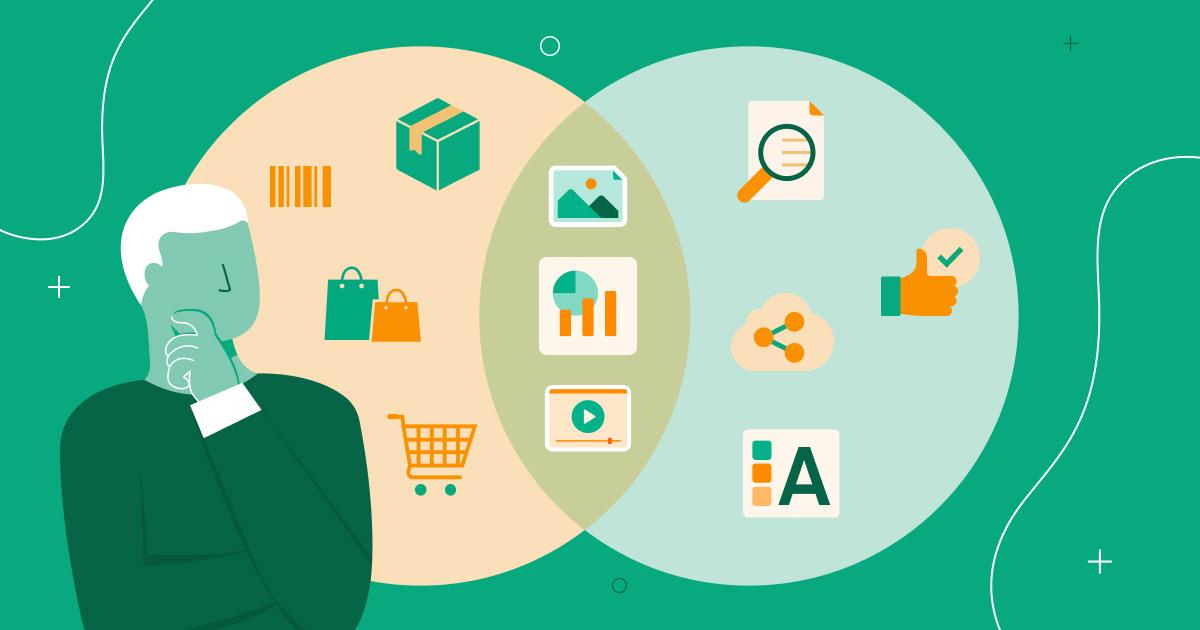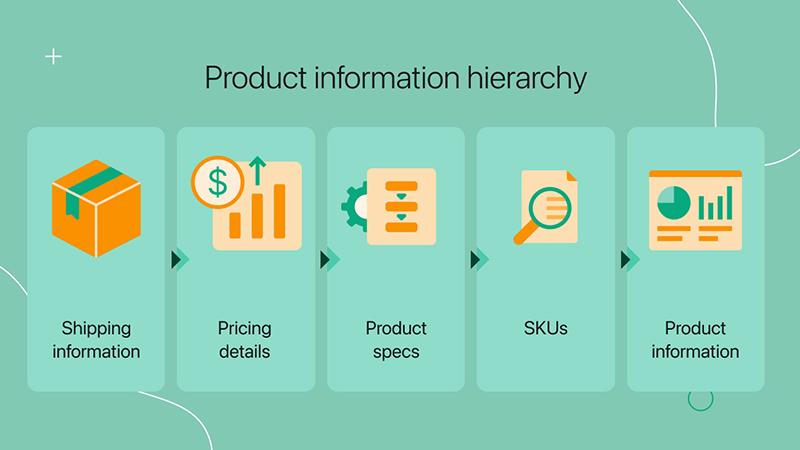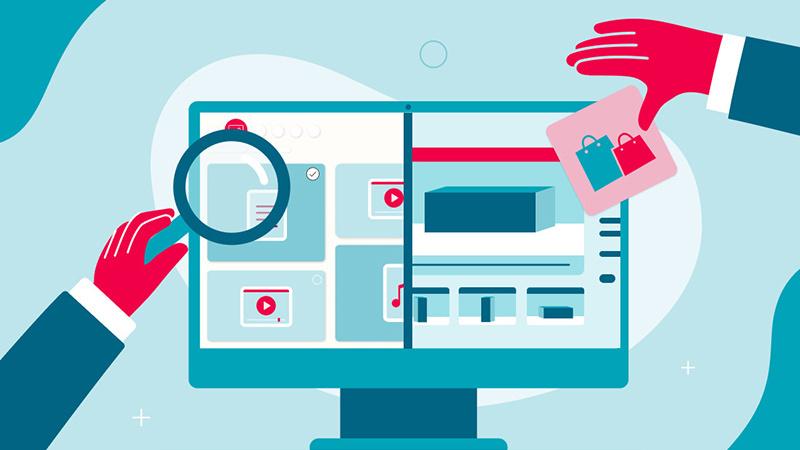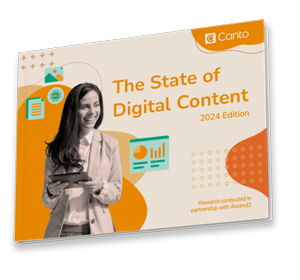PIM vs. DAM: Key differences and why your brand needs both
| October 16, 2024

Key highlights
- A PIM platform contains product data. A DAM platform contains digital brand assets.
- PIM solutions are typically used by product teams. DAM solutions are primarily marketing tools.
- A PIM solution ensures product data consistency. DAM software ensures brand consistency.
For any retail or e-commerce business, staying ahead of the competition with compelling visuals and accurate product information is crucial. But navigating a sea of product specifications, images, pricing, marketing content, and more is anything but easy. That’s where technology solutions like “product information management” typically known as, PIM systems, and “digital asset management” (DAM) platforms come into play.
So, what do these solutions do exactly? And what are the advantages of PIM vs. DAM platforms?
We’ll walk you through the basic differences between DAM and PIM solutions, so you can see why both are essential for successful, streamlined digital commerce.
What’s the difference between PIM vs. DAM?
For those searching for a PIM DAM definition, PIM stands for product information management. PIM solutions organize all the information about each product that a company makes or sells. DAM stands for digital asset management. DAM platforms organize and distribute a brand’s digital files, like product images and marketing content. Both platforms improve consistency and operational efficiency, helping companies achieve better business outcomes.
Let’s dive a little deeper into the PIM vs. DAM distinction and how each of these essential solutions fit into the digital commerce landscape.
What’s a PIM solution?
A PIM platform is a single source of truth for information about the products a company sells. It collects, manages, and distributes product information to retail channels of all kinds. Product information includes SKUs, product specs, pricing details, product descriptions, shipping information, and more.

PIM solutions ensure that the product details a company shares across its online shops, websites, and other sales and marketing channels are always up-to-date and consistent.
Typically, the information in a PIM platform is managed by a company’s product team or product marketing team. With a PIM platform, everyone at the company has on-demand access to accurate product information.
What are the benefits of a PIM solution?
- A PIM solution creates a single source of truth for product information and streamlines the delivery of product data to e-commerce channels such as Shopify, Amazon, and other retailers.
- PIM solutions ensure product data accuracy and consistency, minimizing errors and manual data entry.
- PIM solutions are purpose-built to make product information management easy by eliminating cumbersome and confusing spreadsheets.
- A PIM solution includes customizable user permissions features that allow internal or external stakeholders to self-serve key product information.
What’s a DAM platform?
DAM platforms help teams organize, manage, and share digital brand content. The digital assets managed by DAM platforms include product images and videos, but also other brand content like logos, marketing materials, graphics, brand imagery, and any relevant “metadata.”
Marketing departments use DAM platforms to give employees and external partners on-demand access to the content they need to promote brands and their products. Thanks to digital asset management workflows and integrations with other marketing tools, DAM platforms have become the center of many brands’ marketing stack, serving as a hub for all brand content.
What are the benefits of DAM software?
The benefits of digital asset management go beyond simply organizing brand assets. Here are the top benefits you can expect from using DAM software:
- Centralizes digital assets into one platform, minimizing time spent managing assets.
- Facilitates internal and external collaboration to streamline content production.
- Maximizes content value through enhanced library searchability and easy organization.
- Integrates with third-party applications like Canva, Adobe Creative Suite, and Figma.
- Provides data-driven insights into asset usage.
- Enhances brand consistency and protects brand assets from misuse with access controls and granular permissions for individual users and groups.
Do I need a PIM and a DAM solution?
If your company sells products, then the short answer is yes! Because PIM platforms manage product data and DAM platforms handle digital assets, most brands benefit from using both PIM and DAM systems.
Imagine a scenario where you’re launching a new product. For a successful rollout, people across the company need access to the same up-to-date information about that product at the same time. Retailers will also rely on this information to accurately portray your products to the world, so the information needs to be accurate and shareable. This is a PIM solution’s time to shine.
But you can’t sell a product on the strength of information alone. You’ll also need stunning, on-brand visuals. A DAM platform contains all the images and videos your marketing team, sales reps, and retail partners need for a successful launch.
While some PIM solutions can also store product images, they don’t have the full range of essential features you can expect from a dedicated DAM solution, like AI-powered search, content distribution tools, video compatibility, or review and approval workflows.
How PIM and DAM solutions improve business outcomes
PIM and DAM solutions allow companies to work more efficiently, creating outstanding digital experiences at scale. Overall, that means more revenue for less effort, increasing the ROI of investments in product development and marketing.

By leveraging PIM DAM manufacturing benefits, businesses can streamline workflows, enhance brand consistency, and accelerate product releases, giving them a competitive edge in their industries.
Here’s how:
1. Faster time to market
When bringing new products to market, time is of the essence. PIM and DAM solutions streamline every step of the process. Product managers distribute accurate, up-to-date, properly formatted product information to everyone who needs it, and marketers can do the same with product images and brand assets.
Nowhere is accelerating products to market more essential than in the retail and digital commerce sectors. Some DAM platforms have specially built tools — like Canto’s Media Publisher — for getting product images live across multiple websites and e-commerce platforms at once.
When product releases run like clockwork, brands gain a competitive edge, beating competitors to market and generating more revenue.
2. Better brand consistency
A DAM platform makes it possible to create an on-brand presence at a global scale, whether your collateral’s crafted by in-house creatives, freelancers, or agencies. When you use a DAM platform, content creators in different regions draw from the same collection of pre-approved product images and brand assets, ensuring a unified look across every touchpoint. Why are DAM platforms so effective at enhancing brand consistency? Because, beyond their organizational abilities, they include features like style guides, approval workflows, and content controls — in essence, one platform to manage your brand identity.
When brands also rely on a PIM solution, they can publish consistent and accurate product information to retail channels, building up customer trust and further strengthening brand credibility. Using both platforms makes it easy to maintain an accurate, on-brand, and cohesive presence in the market.
3. Outstanding customer journeys
Customers expect an engaging and interactive buying journey. PIM and DAM solutions make that possible. More efficient workflows enable marketers to adapt creative content and messaging to target specific personas or customer groups more effectively.
Customers get a satisfying experience across every touchpoint — from visuals that resonate to accurate and consistent product specs and descriptions. Plus, marketers can more easily craft campaigns that deliver exactly what a customer wants to see at a specific point in their journey.
4. Greater overall efficiency
PIM and DAM solutions streamline manual processes and make important content accessible. As a result, teams across the company work more efficiently, spending less time on tedious low-value tasks and more time on heavy-hitting projects that drive brand goals forward.
With dedicated platforms to organize, find, and distribute your content and related product data, you can achieve more with less. Increasing content output without expanding your team or investing more in agency work suddenly becomes possible.
5. Improved content ROI
Brand content such as product descriptions and marketing images require investments of both time and money. While your brand may have fine-tuned the content associated with each of your products, are you sure that it’s being fully utilized? Does your sales team have access to the correct product images? Are your products listed with the correct descriptions and specs on retailer websites?
DAM and PIM platforms help squeeze more value out of every piece of content that you create. DAM software’s search capabilities means that visual content is more likely to be found and used. New content can circulate faster and further across your channels. And old content continues to contribute value, resurfacing in fresh campaigns rather than languishing in forgotten folders.
6. Efficient scalability
DAM and PIM platforms transform content workflows with scalable tools for managing brand content and product data. By centralizing your digital content, product data, and connecting your content ecosystem, you can smoothly scale your team’s effectiveness, content production, and even enter new markets more easily.
Discover Canto PIM – the industry-leader in DAM + PIM solutions
Canto PIM is the industry leader in DAM + PIM solutions for a reason. The unique platform centralizes your product information and digital assets, creating a single source of truth for your brand. With tools built to support collaboration, create automated workflows, and make real-time updates, Canto PIM equips your teams with the most accurate data and assets to drive success.
The result? Faster time to market, enhanced brand consistency, and maximized content ROI, all with a platform that scales with your business.
What makes Canto PIM unique:
- All-in-one DAM and PIM solution that integrates product specifications and visual assets.
- Custom attributes and metadata fields to enrich products and asset information for internal and external users. AI-powered features automatically tag content in the library.
- Workflows, Style Guides, DRM tools, and content controls to manage and collaborate effectively
- Share assets and products in formatted, on-brand packages with Portals and Product Catalogs
- Powerful search tools, like AI Visual Search, to locate assets and products quickly.
- Deliver tailored assets and product data to any platform or retailer with Media Publisher and Channel Mapping.
- 40+ integrations with work management, productivity, collaboration, creative tools, CMS, social media platforms, and more.
Ready to learn what your brand can achieve with a unified DAM + PIM solution? Download our free eBook now: From Chaos to Clarity: Transforming Your Product Experience with DAM and PIM.
PIM vs. DAM frequently asked questions
PIM DAM definition
PIM stands for product information management, whereas DAM stands for digital asset management. PIM solutions help organizations maintain consistent product information across teams and channels, and DAM solutions help organizations manage digital asset libraries and maintain brand consistency.
Why use a PIM-DAM solution?
Unified PIM and DAM solutions align product information and digital assets in one, intuitive platform. An all-in-one solution helps to break down information siloes, encourage internal and external collaboration, and speed up times to market.
Is my business a good fit for PIM and DAM?
If you sell products online, yes! Your business will benefit from using both a PIM and DAM solution. A PIM will ensure product data consistency, while DAM enables marketing teams to maintain brand consistency across different channels.
Do PIM and DAM solutions integrate with external platforms?
Any comprehensive PIM and DAM solution will have the ability to integrate with a wide variety of external platforms. Popular DAM integrations include creative tools such as Canva, Adobe, and Figma while PIM platforms often integrate with e-commerce tools such as Shopify and Amazon.
